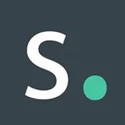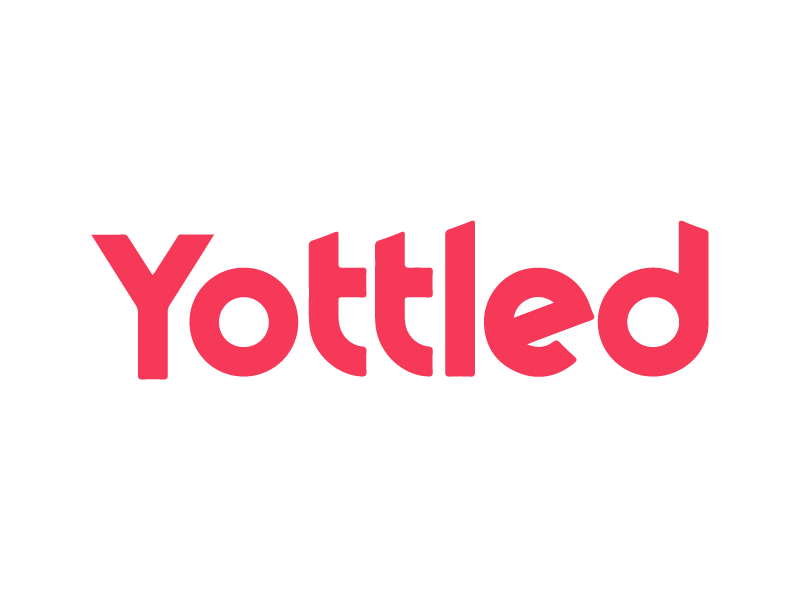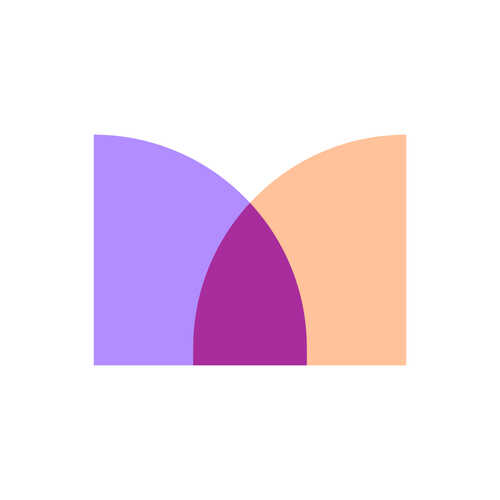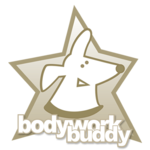What Is Massage Therapy Software?
Massage therapy software is a specialist program designed to enhance the daily operations and efficiency of massage therapists, spas, and wellness centers. This type of software has a number of features for automating administrative tasks, optimizing appointment scheduling, and securely storing and managing client data. One of the most essential features of massage therapy software is its ability to save detailed client profiles and treatment histories, allowing therapists to track progress and tailor treatments to individual needs.
This eliminates the need for paper-based record keeping, reducing the possibility of errors while also ensuring sensitive client information is securely stored. Furthermore, several massage therapist software solutions provide automated appointment reminders, online scheduling, and billing and invoicing capabilities. This saves the therapist time and effort while boosting client communication and convenience.
Another key aspect of massage therapy software is its reporting and analytics capabilities. Therapists can improve their practice by tracking key performance measures such as appointment history, income, and client retention. Furthermore, some massage therapy software contains marketing and promotional capabilities like email campaigns and loyalty programs to help therapists attract and keep clients while growing their business.
When selecting massage treatment software, look for a user-friendly interface, seamless integration with existing equipment and systems, and reliable customer service. Using the right software, therapists can save time, improve their business operations, and deliver a more personalized and efficient experience for their patients.
What Are The Recent Trends In Massage Therapy Software?
The massage treatment sector is continuously changing, and with the advancement of technology, software solutions have become an indispensable tool for many companies. Massage treatment software not only simplifies administrative work, but it also improves the whole customer experience.
As a result, staying current with the latest massage therapy software innovations is critical for any firm trying to succeed in this competitive field.
1. Online Booking And Scheduling: In recent years, an increasing number of firms have been embracing online booking and scheduling software to handle their appointments. This tendency has spread to the massage therapy business, and many software solutions now include this feature. Allowing clients to plan and schedule appointments online simplifies and automates the booking process, eliminating no-shows and last-minute cancellations.
2. Contactless Payments: In light of the COVID-19 pandemic, many companies, including massage treatment clinics, have adopted contactless payment systems. With the rise of mobile wallets and contactless payment methods, many massage treatment software solutions now include integrated payment processing. This enables companies to take payments from clients without requiring physical interaction, boosting safety and convenience for both clients and therapists.
3. Client Retention: Retaining existing clients is equally vital as acquiring new ones. That is why many massage therapy software packages now include tools to help firms enhance client retention rates. Automated appointment reminders, tailored marketing efforts, and loyalty programs are all possible options. Businesses that keep their customers interested and satisfied can boost loyalty and develop long-term connections.
4. Data Analytics: Data is king, and massage treatment software solutions take use of this. Many software solutions now include data analytics and reporting features that allow organizations to measure critical metrics like booking rates, client retention rates, and income. Businesses can use data analysis to find patterns, trends, and possibilities for improvement, allowing them to make data-driven decisions about their profession.
5. Integration Of Wearable Devices: The integration of massage therapy software and wearable technologies is a promising and growing trend. Some software solutions now enable therapists to track and monitor their clients' progress, as well as give tailored therapy plans, using data obtained from activity trackers, heart rate monitors, and other wearable devices.
This not only enhances the client experience, but also encourages a more holistic and customized approach to massage therapy. Keeping up with the newest massage therapy software trends is critical for businesses who want to remain competitive and deliver the greatest experience for their clients. Consider these tendencies while comparing software options to discover the best solution for your organization.
Benefits Of Using Massage Therapy Software
Massage treatment software is an extremely useful tool for massage therapists, spa owners, and healthcare providers. This unique technology streamlines and improves several parts of the massage therapy industry, making it a vital investment for any expert working in this field. One of the primary advantages of massage therapy software is the ability to automate administrative activities. This includes arranging appointments, keeping customer data, and processing payments.
By reducing manual processes, therapists can save time and focus on providing quality services to their patients. Furthermore, massage therapy software allows therapists to conveniently access and maintain client records, such as treatment notes, progress reports, and session histories. This not only enhances patient care, but also allows therapists to build treatment regimens tailored to individual requirements and preferences.
Furthermore, massage therapy software provides useful features for both therapists and clients, such as online booking, automated reminders, and the ability to securely store payment data. These features not only enhance the overall customer experience, but also lessen the possibility of missed appointments and payment issues. Another key advantage of massage treatment software is its reporting and analytics features. This enables therapists to monitor business performance, analyze client data, and make informed decisions that promote growth and profitability.
Using real-time data, therapists can discover patterns and trends, alter services and pricing, and tailor marketing efforts to attract new customers. Finally, massage treatment software promotes a professional and ordered image for enterprises. From branded digital intake forms to client communication, the program simplifies and improves the entire customer experience. This not only adds a layer of professionalism, but it also helps to maintain existing clients and attract new ones through favorable word-of-mouth.
Important Factors To Consider While Purchasing Massage Therapy Software?
When looking to buy massage therapy software, you should evaluate several critical elements to ensure that it suits your company's specific objectives and goals. While there are numerous software alternatives on the market, not all of them will be suitable for your massage therapy practice.
To make an informed decision, here are some crucial elements to consider while selecting massage therapy software:
1. Features And Functionality: One of the initial considerations should be the software's features and functionality. Some important features to look for include appointment scheduling, client management, billing and invoicing, intake forms, and inventory management. Consider your company's specific needs and ensure that the software includes the features required to suit those objectives.
2. Usability: The software should be simple and straightforward to use for both you and your customers. This will save you both time and frustration in the long run. Look for software with a simple and easy-to-use design, as well as thorough user guides and customer service to help you with any queries or concerns you may have.
3. Customization And Integration: Your massage therapy software should be adaptable to meet the specific requirements of your organization. This includes the ability to design your own forms and templates, as well as interface with other software applications you may already be using, such as accounting or email marketing.
4. Security And Privacy: Because massage therapy involves sensitive client information, it is critical that the software you use has adequate security mechanisms in place to secure client data. Look for HIPAA-compliant software that uses encryption to protect data.
5. Pricing And Scalability: Think over the cost of the program and whether it fits into your budget. Some software may provide a free trial or charge a monthly subscription cost, but others may need a one-time payment. Consider your business's future expansion and whether the software can accommodate it.
6. Customer Assistance: Having dependable customer assistance is essential in case you run into any problems or have concerns regarding the product. Look for software firms that provide several kinds of assistance, such as phone, email, and live chat, and have a strong reputation for timeliness.
7. Reviews And Recommendations: Conduct research and read feedback from other massage therapists who have used the program you are considering. This can provide you with information about the user experience, including benefits and negatives and prospective issues.
By taking these crucial elements into account, you can make an informed decision about which massage therapy software will best meet the demands of your business. Remember that the correct software can help you streamline your operations, improve the client experience, and ultimately contribute to the success of your massage therapy business.
What Are The Key Features To Look For In Massage Therapy Software?
When looking for massage therapy software for your clinic, you should examine a number of critical aspects. These capabilities will not only help you optimize your everyday operations, but will also improve the overall experience for both you and your customers.
After conducting extensive research and consulting with industry professionals, the following critical qualities should be at the top of your list when assessing massage therapy software options:
1. Online Booking And Scheduling: Allowing clients to book and plan appointments online can considerably increase efficiency and convenience for both you and them. Look for software that offers flexible scheduling choices, automated reminders, and real-time availability.
2. Client Management: The program should include a comprehensive system for maintaining client data, such as contact information, appointment history, session notes, medical history, and payment records. This information should be easy to find and secure within the software.
3. Integrated Billing And Invoicing: A decent massage therapy software should provide integrated billing and invoicing tools to help with payment processing. This includes the ability to accept numerous payment methods, track invoices, and provide financial management reports.
4. SOAP Notes And Charting: To track client progress, the program should include a function for producing SOAP notes and charting sessions. This provides for extensive session recording, which you and your clients can refer to in future meetings.
5. Marketing And Communication Tools: Look for software that has marketing and communication services, such as email and text messaging, to stay in touch with your customers and keep them informed of discounts or updates.
6. Inventory Management: Inventory management is an important function for massage therapy software in spas or practices that sell products. This enables you to track product sales, manage stock levels, and even automate reordering.
7. Customization Options: Because each practice is unique, it's critical to select software that can be tailored to your specific requirements. Look for ways to incorporate your own branding and customize features to suit your specific practice.
8. Mobile Compatibility: In today's digital world, software that works with mobile devices is essential. This helps you to manage your practice while on the go, keeping track of appointments and client demands away from the office.
9. Technical Assistance: When implementing new software, it is critical to have consistent technical assistance. Look for software vendors who provide assistance and troubleshooting to ensure a smooth transition and ongoing support.
Why Do Businesses Need Massage Therapy Software?
In today's fast-paced and competitive corporate environment, efficiency and organization are critical. This is no exception for massage treatment enterprises. With the increasing demand for massage services, businesses must streamline their operations to give high-quality services to their clientele. Here's where massage treatment software comes in. First and foremost, massage therapy software enables businesses to stay organized and manage their appointments properly.
It eliminates the need for manual appointment scheduling, which is time-consuming and prone to errors. Clients can use software to easily plan, reschedule, or cancel appointments online, making the entire process more efficient and comfortable. Massage treatment software can also help you automate administrative activities like invoicing, payment processing, and client record management.
This gives therapists and staff more time to focus on providing the best care for their clients. Furthermore, having all client records in one location enables for simple access to critical information such as treatment history and preferences, resulting in more tailored and efficient service. Another advantage of massage therapy software is the ability to track and manage client information.
This includes their contact information, appointment history, and comments about their special requirements and preferences. This can provide organizations with significant insights into their customers' tastes and behaviors, allowing them to modify their services and marketing efforts accordingly. Furthermore, massage therapy software helps promote internal communication and teamwork.
Real-time texting and shared calendars enable therapists and staff to effortlessly interact and organize schedules, resulting in a more efficient and harmonious team. In addition to these advantages, massage therapy software provides secure storage of personal client information and compliance with industry requirements such as HIPAA. This fosters client trust while also ensuring the security of their personal information.
Overall, massage therapy software is an indispensable tool for enterprises in this field. It improves organization, efficiency, communication, and client management, resulting in better service and more happiness for both the company and its customers. With a plethora of features and benefits, investing in massage therapy software is a wise move for any massage therapy firm seeking to expand and flourish in a competitive market.
How Much Time Is Required To Implement Massage Therapy Software?
The time necessary to adopt massage therapy software will vary depending on several factors, including the software's complexity, the size of the firm, and the level of customisation required. However, on average, the implementation phase can take between 4 and 12 weeks. The first stage in adopting massage therapy software is gathering all relevant information and data about the business.
This comprises client lists, appointment calendars, and inventory information. This information will be needed to configure the software and ensure a seamless transition from the previous system. Next, the program must be configured and tailored to meet the specific demands of the organization. This can include configuring various services, developing pricing plans, and adding any particular requirements.
Depending on the extent of personalization required, this procedure might take anything from a few days to several weeks. Once the program is configured and personalized, it must be integrated with existing systems such as payment processors and accounting software. This is a critical step in ensuring that all data is properly transferred and recorded in the new software.
The time required for integration varies according to the complexity of the current systems. Employee training is the final phase in the massage treatment software implementation process. It is critical that all staff members are familiar with the new program and understand how to use it effectively. This may include hands-on training, online tutorials, and software provider assistance. Training might last a few days or a few weeks, depending on the size of the firm and the number of employees.
What Is The Level Of Customization Available In Massage Therapy Software?
The level of customization accessible in massage treatment software varies according to the software package and capabilities provided. However, most massage therapy software alternatives offer some degree of flexibility to meet the specific demands of massage therapists and their businesses. The ability to create and adjust client profiles is a crucial customization feature in massage therapy software.
This allows therapists to provide critical information such as client contact information, therapy preferences, and any special health needs. Some software packages also allow you to add personalized notes and reminders to your clients' profiles. Massage treatment software frequently includes customizable scheduling and appointment management features.
Setting precise time periods for different sorts of treatments, scheduling recurring appointments, and shutting off availability for personal time or breaks are all possible options. Furthermore, certain software applications allow for appointment color coding and labeling, making it easier to distinguish between different sorts of appointments. Another element of customisation is the ability to design and modify treatment plans and forms.
This enables therapists to personalize their services to each client's specific requirements and preferences. Some software choices also include pre-made templates for popular treatment programs like deep tissue or hot stone massages, making it easy to customize and save time. Furthermore, many massage therapy software applications provide several customization possibilities for invoicing and payment processing.
This can involve enabling various payment methods, designing personalized invoices, and allowing discounts or promotions to be applied. It is crucial to remember that the level of personalization may vary depending on the pricing plan or subscription selected. Some software packages may include more advanced customization capabilities in higher-tier plans.
Which Industries Can Benefit The Most From Massage Therapy Software?
Massage treatment software is a strong tool that can significantly increase the productivity and effectiveness of massage therapists across a variety of sectors. While the primary role of this program is to reduce administrative processes and improve appointment management, its advantages go beyond time savings and organization.
We'll look at which sectors can profit the most from employing massage therapy software.
1. Healthcare Industry: Massage therapy software can be a useful tool for chiropractors, physical therapists, and rehabilitation facilities. These experts frequently incorporate massage therapy into their treatment strategies for patients suffering from chronic pain, injuries, and other medical issues. They can use software to conveniently schedule and manage their patients' massage treatments, track their progress, and keep accurate electronic health records.
2. Spa And Wellness Industry: Massage treatment software is a game changer in spas and wellness centers. It can help you manage client appointments, provide reminders about forthcoming sessions, and even allow for online booking. The program may also track client preferences and histories, allowing therapists to give more personalized and consistent care. Furthermore, the software can help these organizations manage inventory, conduct point-of-sale transactions, and run marketing campaigns.
3. Freelance Massage Therapists: Massage therapy software can be quite beneficial for independent massage therapists. They may utilize its user-friendly interface to arrange customer appointments, produce and send invoices, and keep track of their business funds. This program also includes appointment reminders and online payments, making it easier for freelance therapists to deliver excellent client service while projecting a professional image.
4. Sports Sector: Massage treatment is used to prevent and treat injuries in the sports sector. Massage therapy software can help sports teams, coaches, and athletes schedule massages, track training and treatment progress, and interact with therapists. The program can also help athletes manage their medical history and treatment preferences, resulting in more personalized and successful massage sessions.
5. Corporate Wellness Programs: Massage therapy is increasingly being incorporated into workplace wellness programs to boost employee health and well-being. In such circumstances, massage therapy software can assist HR departments or wellness coordinators in scheduling massage treatments, managing employee information, and tracking usage and satisfaction. The software can also provide statistics and analytics to assess the program's impact on employee physical and mental wellness.
Conclusion
To summarize, investing in a dependable and effective massage therapy software can considerably benefit massage therapists and their businesses. By automating administrative duties, boosting client management, and improving the overall client experience, these software alternatives can save time, improve income, and streamline operations. However, while deciding which software to buy, you need carefully analyze your individual demands and budget, as well as the essential features and integrations offered by various vendors.
You can make an informed selection and select the best massage therapy software for your business by completing extensive research and taking advantage of free trials, demos, and customer reviews. Consider data security, customer service, and scalability when planning for future development. With the appropriate tools in place, you can elevate your massage therapy practice and provide your clients with great care and service.















